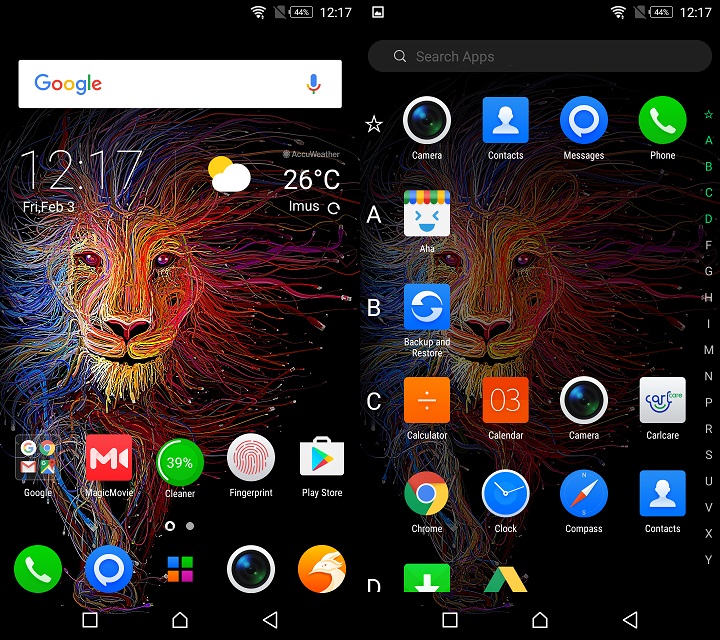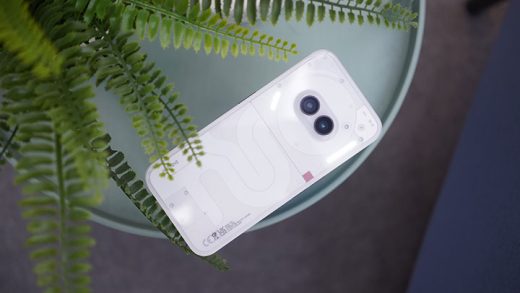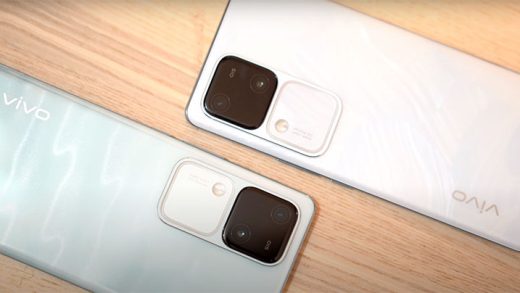Infinix has released two new smartphones in the country – the Zero 4 and the Zero 4 Plus. The latter, which we have for review, is the most powerful of the two, packing a premium build, 5.98-inch display, 20.7MP camera, Helio X20 deca-core CPU, 4GB RAM, and large 4,000mAh battery. For under Php16K, is the Infinix Zero 4 Plus one of the best phablets in this price range? Find out in our review.

Table of Contents
Design and Construction
Right off the bat, the Zero 4 Plus’s stand-out feature is its premium build. It has a metal unibody chassis that is sturdy and cool to the touch. The edges are chamfered that smoothly aligns with the bezel and 2.5D curved Gorilla Glass 4. The bottom sides, on the other hand, are tapered, which make it feel thinner when gripped.

On the front, we have the 5.98-inch display. Above it are the receiver, 13MP front camera with LED flash, notifications light, and sensors. The bottom part is devoid of any capacitive buttons as it uses on-screen navigation keys.

On the right are the metallic volume and power/lock buttons. They’re conveniently placed towards the middle for better reachability.

On the left is the hybrid tray which accepts two SIM cards (micro + nano) or a microSD card at the sacrifice of one SIM slot.

Looking at the top, there’s the headset jack, while down at the bottom is the microUSB port, and two sets of drilled holes for the microphone and loudspeaker.

Flip the device on its back and you will see the large protruding 20.7MP camera, dual-LED flash, Laser AF, fingerprint scanner, a secondary microphone, and the Infinix branding.

On the hands, the Zero 4 Plus demands to be used by two hands especially if you have small hands. It feels good though thanks to the aluminum body and 2.5D glass on top. The tapered sides are welcome features as they make the relatively chunky 8.25mm frame thinner. It’s also hefty at 203g but it’s an understandable trade-off considering the display size, premium build, and large battery.
Display and Multimedia
If we’re talking about the display, the Zero 4 Plus has plenty of it at 5.98-inches, making it easily a phablet. It also has slim bezels on the side and the top which makes for a good screen-to-body ratio. Display quality is good with pleasing colors, wide viewing angles, and strong brightness when used outdoors.

The loudspeaker, on the other hand, is loud and crisp. Like most smartphones, it lacks bass, but we never had problems listening to it whether we’re watching videos or listening to music.
OS, UI, and Apps
The software side is handled by Infinix’s XOS Chameleon V2.1.0 based on Android 6.0 Marshmallow. It’s heavily skinned, with its own set of icons and wallpapers, but still, has a familiar layout.

Newly installed apps are placed right away in the next home screen but it still uses an app drawer that displays all the apps in alphabetical order. Like what we stated in our past reviews of Infinix phones, this is a bit redundant, but can still be hand in some cases.

Speaking of apps, there’s plenty pre-installed, mostly utilities from Infinix. Out of the box, there’s Instagram, Facebook, Messenger, Palmchat, Aha app store, as well as Google’s own apps. Some of these can be uninstalled, but for those that you cannot, you don’t have to worry as it has plenty of storage at 64GB with 52GB left for the user. There are microSD card support and USB OTG function as well, so you’re pretty much covered when it comes to memory expandability.

One feature of the Zero 4 Plus is the Multi Account. What it does is it makes a separate mirrored version of your installed apps like Facebook or Instagram and allow you to log into it with a different account. This is convenient for those who manage multiple accounts on social media as you don’t have to log in and out.
Camera
Imaging is one of the strongest department of the Zero 4 Plus. It has a 20.7MP main shooter with OIS, Laser AF, and dual-LED flash. The front camera, on the other hand, has a 13MP sensor with a LED flash as well. The images produced by the main camera are some of the best we’ve seen on a smartphone in this price range.

They’re crisp, with natural and accurate colors, and packed with details thanks to the high-resolution sensor. It’s also fast and locks in quick thanks to the Laser AF, while blur is minimized with the help of OIS. Although we noticed that it’s a bit sluggish when it comes to macro shots. It’s not a big bummer as we can just put a little distance and just crop it afterward.

We can also use the Pro (Manual) mode if we want more control over the camera. The front camera, on the other hand, has fast face-tracking and beautify effect but a bit slow in capturing and produces images with soft details.
As for video recording, it maxes out at 1080p resolution at 30fps in MP4 format. However, for some reason, YouTube is having a hard time processing and we always get an error saying that we should upload a supported file type. Windows can play it though but only its audio. We hope this is just a software issue which can be fixed with an update. We were able to upload the video but has to be converted using a third-party software.
Performance and Benchmarks
Powering the Zero 4 Plus is a MediaTek Helio X20 deca-core CPU clocked at 2.0GHz, Mali-T880 MP4 GPU, and 4GB RAM. The configuration has worked well with the device as it runs well and didn’t show any crashes, random reboots, or overheating. Games run smoothly like Mobile Legends and NBA Live Mobile, while the fingerprint scanner is snappy and unlocks the phone right away. Check out the benchmark scores below:

- AnTuTu – 85,057
- Geekbench – 1,584 (Single-core), 4,351 (Multi-core), 2,572 (RenderScript)
- Vellamo – 2,453 (Multicore), 2,835 (Metal), 2,730 (Chrome)
- 3D Mark – 888 (Sling Shot Extreme)
- PC Mark – 3,050 (Work 2.0), 2,902 (Storage)
Call Quality and Battery Life
The Zero 4 Plus has basic connectivity features like 4G LTE, WiFi, and Bluetooth. There’s dual-SIM support but in a hybrid setup which means you have to let go of the microSD card support if you want to take advantage of this feature. Call quality and mobile data work fine as long as our network signal is good.

Powering the whole device is a large 4,000mAh battery which is good considering its large display. That capacity was able to give us a whole day of usage even with a couple of hours of gaming on the side. PC Mark’s battery benchmark rated it at 10 hours and 6 minutes which is good. As for our video loop test which involves playing a 1080p video on loop in Airplane mode at 50% brightness and volume with headphones plugged, the result is almost 14 hours of playback.
Conclusion
Infinix has certainly greeted 2017 in the Philippines with a bang thanks to the Zero 4 Plus. It almost has everything a heavy user would want in a smartphone – large vibrant display, good internal configuration, premium build, great camera performance, and large battery. Lastly, it doesn’t ask much at Php15,990. So if you’re on a hunt for a good phablet under this budget, then the Zero 4 Plus is worthy of serious consideration.

The Infinix Zero 4 Plus is available at Lazada via Hellotronics. See listing here.
Infinix Zero 4 Plus specs:
5.98-inch Full HD IPS display, 368ppi
Corning Gorilla Glass 4
2.0GHz MediaTek Helio X20 (MT6796M) deca-core CPU
Mali-T880 MP4 GPU
4GB RAM
64GB storage
Up to 128GB via microSD
20.7MP rear camera, OIS, Laser AF, dual-LED flash
13MP front camera w/ LED flash
4G LTE
Wi-Fi 802.11ac
Bluetooth 4.2
GPS, A-GPS
USB OTG
Fingerprint scanner
Gyroscope sensor
XOS (Android 6.0 Marshmallow) upgradeable to Android Nougat
4,000mAh non-removable battery w/ Quick Charge
160.50 x 82.97 x 8.25mm
203g
Crystal Gray, Champagne Gold
Pros:
* Premium build
* Good display
* Great camera
* Good performance
* Long battery life
* Multi-account feature
Cons:
* Some pre-installed and unfamiliar apps
* UI could do well with a simpler layout
* Limited availability (out of stock as of writing)
















































Am a Kenyan, East African and would wish to have one of this brand. However, how durable/vulnerable is the software? Can it withstand a fall or even minor attacks from malware? I purchased infinix hot 3, accidentally it fell from a two feet high table and ever since it no longer works well, always crushing to a point I have to memory flash it. The repairer, which is an infinix outlet here claims it is a virus. This made me think again about the company’s brands durability. Can someone up date on this please. Thanks
Online lang po ba to available or meron po bang infinix store sa SM Megamall Cyberzone?
This is a fair enough smartphone review, albeit subjective, with the exception of the provided benchmarks and the section on battery usage.
It is obvious that what yugatech needs in order to distinguish itself above the rest of the other Philippine sites reviewing locally released smartphones is to have in-depth, detailed, well thought-out and organized reviews that have comparisons with other smartphones of the same or similar class, accompanied by measurements as much as possible in conjunction with real-world tests.
This is a flagship smartphone introduced at a very reasonable (for us Pinoys) price point, so why not compare its features with other flagship phones similarly situated, such as the latest offerings of Xiaomi, Cherry Mobile, MyPhone, et al.?
Nowadays the smartphone, by its definition and nature, is the single most predominant and ubiquitous personal electronic device in the world. By utility it must be a versatile, all-around handy gadget: for communication and connectivity to social media (naturally!); as a personal assistant and organizer (to do with its OS, UI and the user’s app library and preference); as a research tool and assistant and for internet browsing (ditto); as a camera (leading-edge still image and video capabilities are pushing the boundaries into SLR and dedicated device territory); as a portable gaming device (just ask young and not-so-young folks); as a nexus device and controller for other smart and connected appliances around the house (internet of things); and, as a digital video and audio device. I only mention those I can tap out off-the-cuff. There may be more.
Of these, the one most often ignored by local reviewers, including yugatech, is the capability of the smartphone as a digital audio player. The flagship products of the top name brands—Apple, Samsung, LG, Sony—have built-in chipsets that can be found in expensive top-tier so-called high-end audio DACs (digital to analog converters) and amplifiers with related wireless audio features, both lossless (think Apple’s AirPlay) and otherwise (Bluetooth). Add to this the fact that increasingly, memory storage capacities tend to increase with each model’s iteration, and you have on your hands a high-quality digital audio player as well.
High end audio is a billion-dollar industry. Apple, Samsung, Sony and to a certain extent LG are by default incorporating such features into their top tier models in order to connect and entice consumers into their related accessories and products: earphones, headphones, portable amplifiers and DACs, online stores, the list goes on. Take the almost 3-year old Apple 6 and 6+. It has built-in CirrusLogic chipsets that output analog audio the quality of which rivalled—and even surpassed—dedicated top end offerings at the time they were launched. The same goes for Samsung’s flagship Galaxy series. Basically all you need is a very good quality IEMs (in-ear monitor, the category for that earphone that is snugly inserted into one’s ear canal and isolates from extraneous sound) or headphones (the ones that go over your head and over or around your ears) of appropriate sensitivity and impedance and you can have a personal audio system that can rival HiFi (high fidelity) desktop and listening room systems that cost hundreds of thousands of Pesos more.
In this particular review, Mr. Diangson writes: “The loudspeaker, on the other hand, is loud and crisp. Like most smartphones, it lacks bass, but we never had problems listening to it whether we’re watching videos or listening to music.” There is nothing more as to audio features or quality after that.
There is, however, a photograph of all the items included with one’s purchase out of the box. We could see that an IEM is included. Such earphones, as opposed to your generic earbuds, suggest there may be more as to audio quality than just music coming out of the phone’s tiny speakers. Has the reviewer tried listening to the Infinix Zero Plus using the included earphones and playing a high bitrate audio file from a good quality source? How is its sound compared to the same file played in a reasonably good desktop system with very good quality speakers as reference? How does it compare (using the same reference audio file) with the other flagship phones of other brands that the reviewer was able to test?
I understand equipment required to be able to do and answer what I’ve just asked is expensive. However, there are inexpensive ways to get around it.
I hope yugatech will strive to improve its reviews section and try to cover all those other aspects that other local sites simply gloss over, like going more in-depth with audio quality as I’ve mentioned. The end result, if setup in a well-organized review library/archive, will undoubtedly raise yugatech above and beyond the other sites and what they’re doing. The benefits that will follow you can already imagine.
Which one do you think is better, Infinix Zero 4 Plus or Xiaomi Mi 5s 4/32?